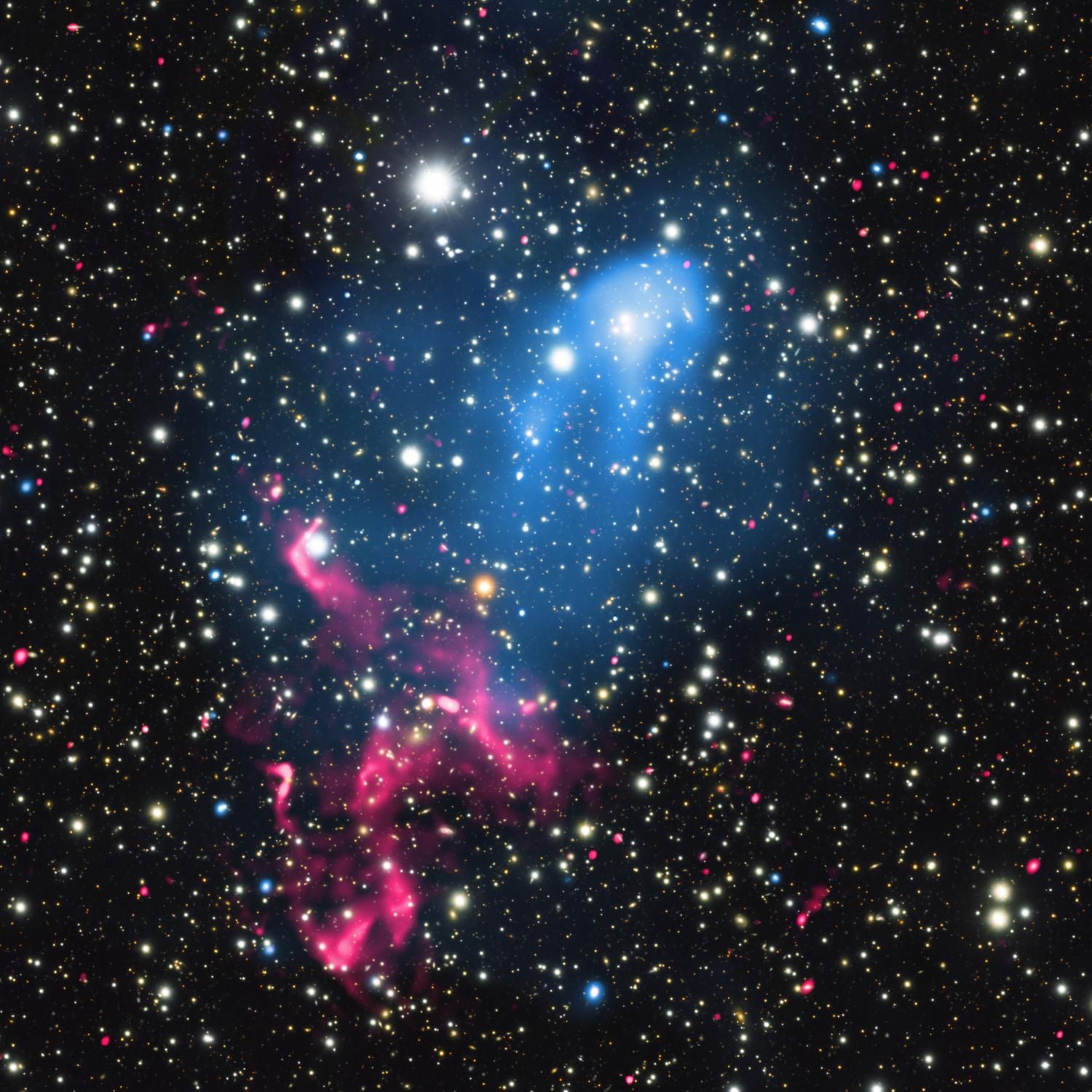
This composite image fuses hot X-ray gas (blue) from NASA’s Chandra Observatory with vast radio filaments (pink) captured by GMRT and the VLA, all set against thousands of optical galaxies from Subaru and Keck. It reveals the dramatic interplay of a spinning black hole jet and a colossal cluster collision some two billion light-years away.
Location of Cosmic Double Whammy in Abell
The Cosmic Double scene unfolds in the merging galaxy clusters Abell 3411 and Abell 3412, located roughly two billion light-years from Earth in the constellation Hydra. Each cluster weighs about a quadrillion times the mass of our Sun, making their union one of the Universe’s most energetic events.
At this distance, light has traveled across 20 million centuries before reaching our instruments. Observing such remote giants requires a coordinated effort across wavelengths—optical telescopes chart member galaxies, while X-ray and radio arrays trace invisible gas and particle shocks.
Structural Details
In X-ray light (blue), one cluster’s hot intracluster medium appears comet-shaped as it plows through its neighbor’s gas. This searing plasma, heated to tens of millions of degrees, outlines the wake of the merger’s supersonic shock front. The Chandra observations, led by R. van Weeren et al., highlight this turbulent flow with unprecedented clarity.
Overlaid in pink are two sprawling radio relics, each stretching over a million light-years. These filaments mark where shock-accelerated particles emit synchrotron radiation in the low-frequency bands. At the heart of the system, a spinning supermassive black hole in one cluster produced a tightly wound magnetic funnel, launching a high-speed jet of charged particles. As these particles encounter the merger’s shock waves—cosmic versions of sonic booms—they receive a second energy boost, creating what researchers describe as a “one-two punch” particle accelerator.
Scientific Importance of the Cosmic Double
This discovery unites two powerful cosmic processes—black hole outflows and cluster mergers—into a single particle acceleration factory. By measuring gas temperatures and densities in X-rays, astronomers infer the total mass distribution and the role of dark matter in shaping structure.
The double acceleration mechanism sheds light on the origin of giant radio swirls first observed in Abell 3411/3412 by the GMRT. Shock-driven re-acceleration explains how electrons reach extreme energies and persist for hundreds of millions of years, solving a long-standing mystery in cluster physics.
Moreover, combining data from Chandra, GMRT, VLA, Subaru, and Keck demonstrates the power of multiwavelength astronomy. Each facility contributes a vital piece: optical imaging maps galaxy locations, radio arrays reveal magnetic turbulence, and X-ray observatories probe the hottest plasmas.
Visual Impact
Against a backdrop of countless optical stars and galaxies, the ghostly blue glow stands out, hinting at invisible forces at play. The widening pink relics meander like cosmic rivers, their tangled tendrils suggesting both violence and elegance.
The contrast between pinpoint optical lights and diffuse colored overlays draws the viewer’s eye across scales—from individual galaxies to megaparsec-long shock fronts. This fusion of colors and textures evokes the raw power of events that transform the cosmic landscape.
Credit
X-ray: NASA/CXC/SAO/R. van Weeren et al.
Radio: GMRT, NSF’s Karl G. Jansky Very Large Array
Optical: NAOJ/Subaru, Keck Observatory
Analysis led by Reinout van Weeren and colleagues at the Harvard-Smithsonian Center for Astrophysics, with key contributions from Felipe Andrade-Santos and William Dawson.
